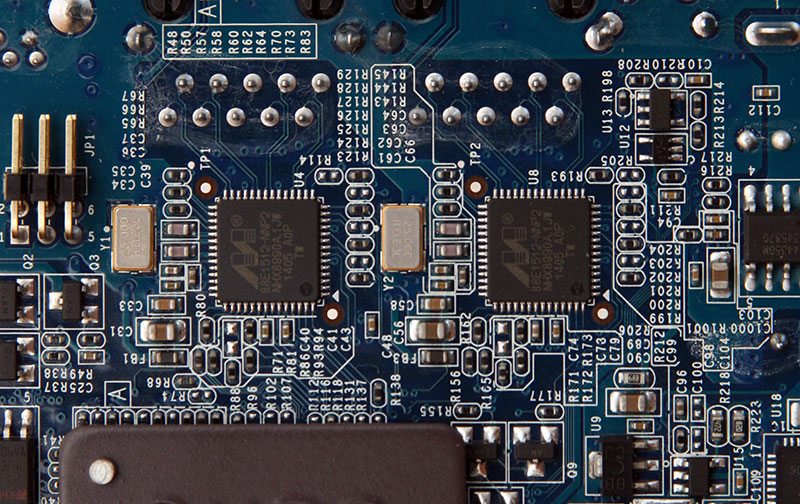Synology DS414slim 4-Bay NAS Review
Chris Hadley / 10 years ago
A Closer Look
When we talk about a system that rune solely on 2.5″ drives, we naturally expect it to be smaller than a typical 4-bay system, but it’s only when we get it out of the box and on to the base plate that we can understand just how small it is. Measuring in at just 12cm tall, 10cm wide and a shade over 14cm deep, the slim is a tiny cube compared to its big brothers such as the DS414 and the DS414j which we looked at a couple of months ago. The small base plate gives a bit of style to the NAS, which could easily be placed up on a shelf or on top of a desktop system, without worrying about the weight breaking anything; as we would expect from a system that weighs in at a fraction over 1.1kg with drives.
With the drive bays situated around the back of the system, the front panel is rather bare, with a sole USB3.0 port and a line of activity LEDs for each of the drives and network interfaces set towards the left of the system. The power button and system status LEDs are tucked round to the left hand side of the unit, breaking up the otherwise cube-like appearance.
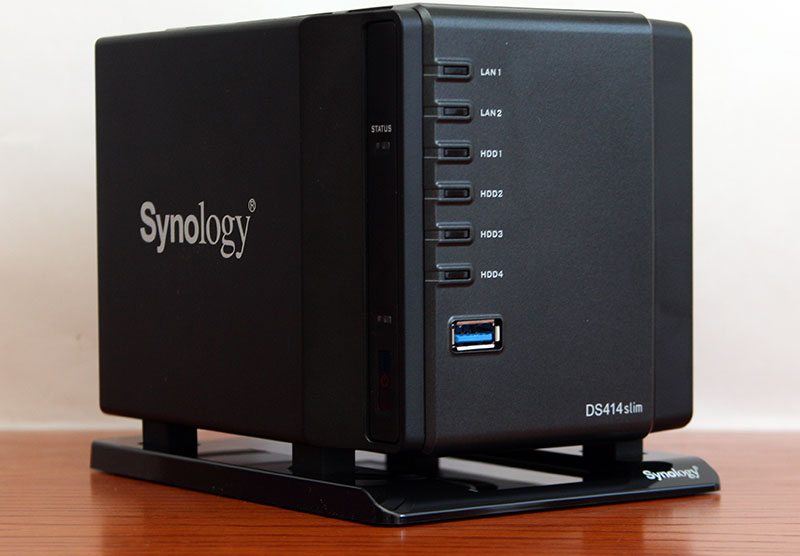
With the front panel no bearing any form of ventilation, the slim has a series of small cut-outs on the top to help vent any heat away from the drives, which on this scale do not typically run as hot as a 3.5″ variant.
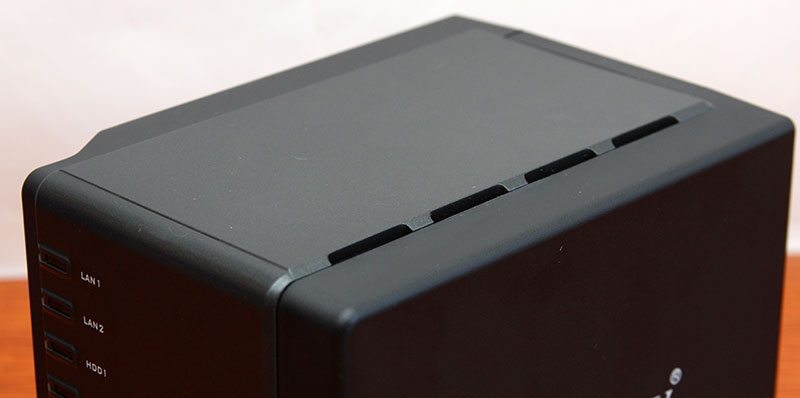
The underside brings us a small fan which draws air in from the underside of the body and up through to the vents on the top of the chassis as noted above. Four soft rubber feet sit into equally positioned recesses in the base plate and when running there is near zero vibrations felt through a desktop.
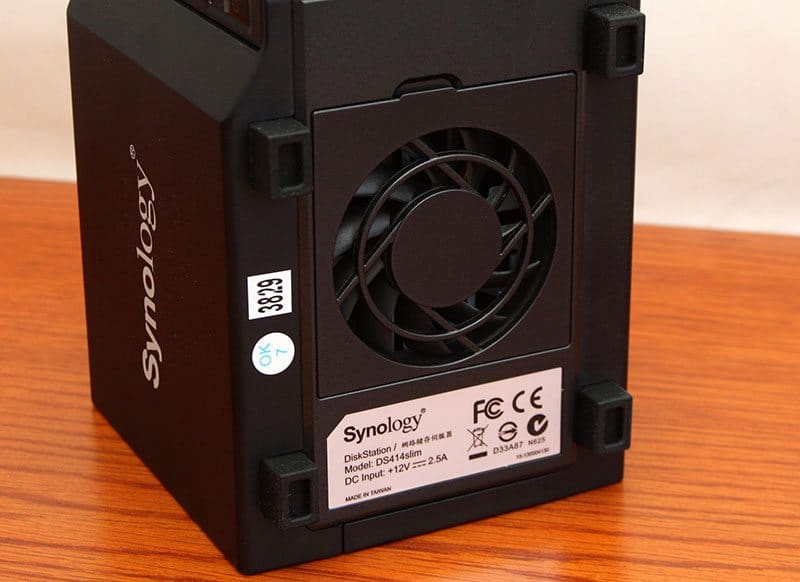
Fans, especially those as small as this 60mm number, are notorious dust magnets so tool free access is welcomed for periodic cleaning.
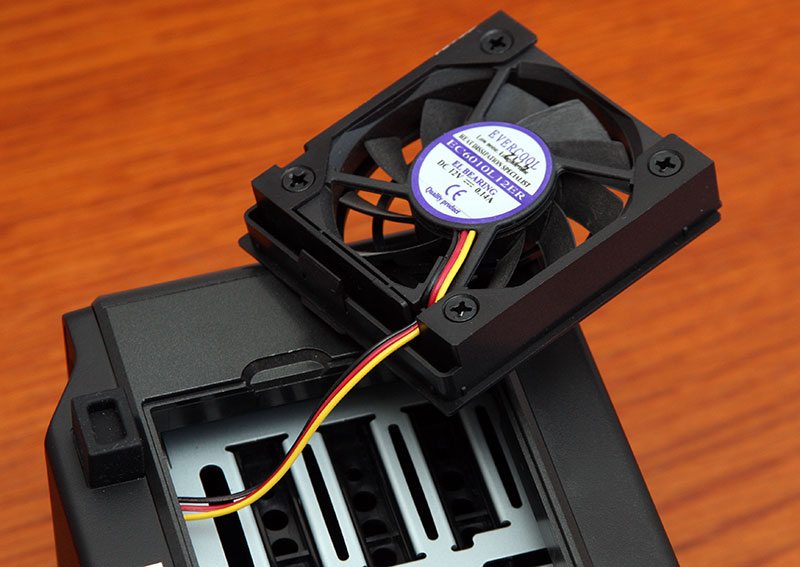
In with the accessories we find a set of stickers, numbered 1 to 4, for the user to attach to each of the drive trays on the rear of the chassis. Why these are included though baffles me – why not leave the trays blank like we would on any other system.
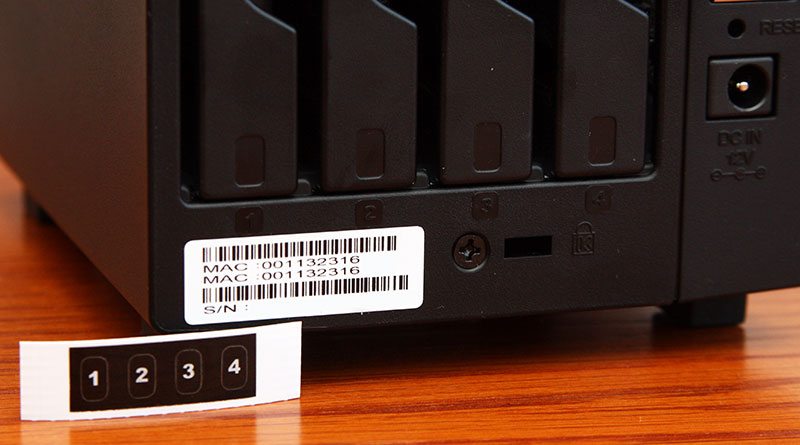
After placing the numbered stickers on to the drive trays we can take a full glance at the rear of the slim. Each of the four drive pays simply push into place with no locking mechanisms present, whilst down the right hand side we get a second USB3.0 port, dual Gigabit LAN, DC power and below bay 3, a Kensington lock point.
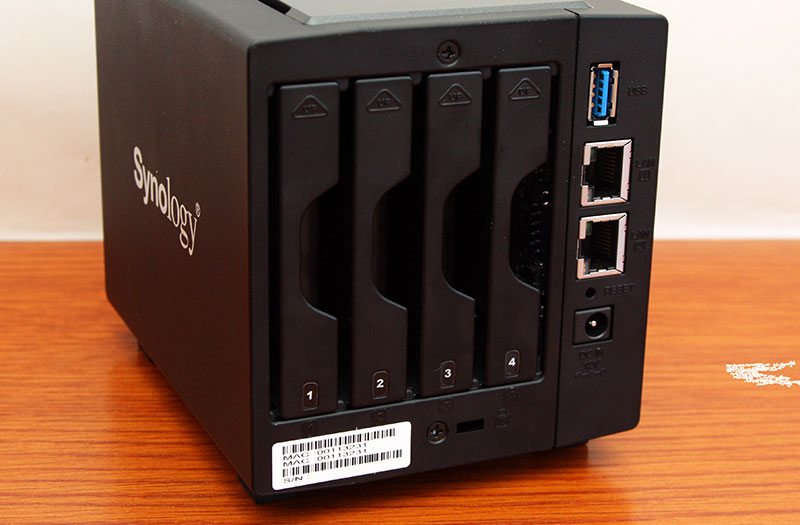
With this system using 2.5″ drives as we know, the enterprise class 3.5″ Se drives that I normally use for NAS reviews are of no assistance to us here. Instead we will be using WD’s 2.5″ 1TB Red drives, which are built for small NAS applications with up to five drives. Compared to say the DS414 which can hold in the region of 20TB of RAW data (when using 5TB drives), the slim is limited to a more modes 4TB of storage, or 3TB in RAID5 – this is still more than enough for the average home user though.
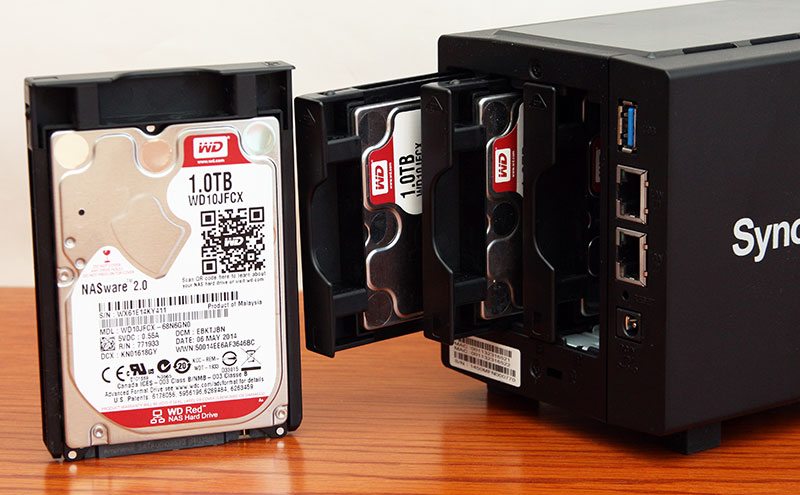
Peeling away the plastic chassis of the DS414slim we can get a view of the also tiny metal frame and motherboard that lies within. With the outer dimensions of the slim somewhat determined by the size of the drives, Synology have tried, where they can, to keep the framework to a minimum.
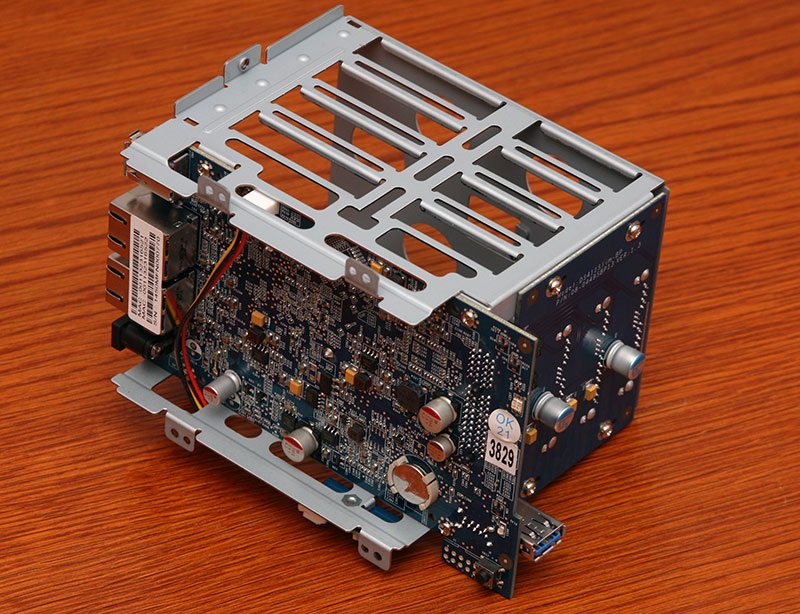
To bring the fan header round to the underside of the chassis where it can be easily accessed when removing the fan, a small extension cable and tiny PCB with another fan header is positioned on the underside of the drive bay cage.
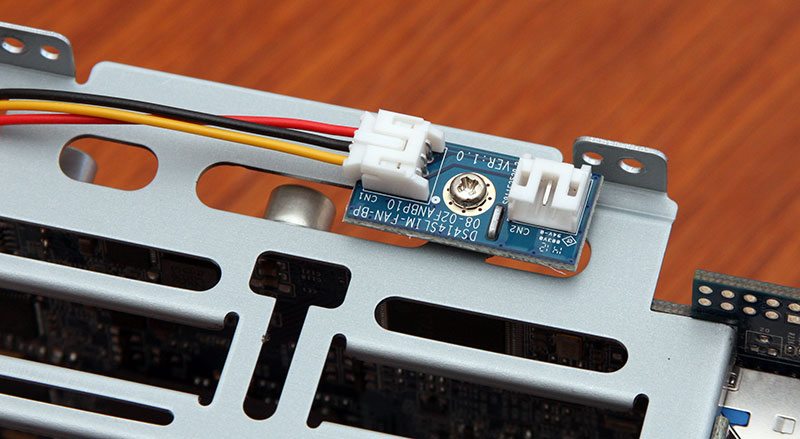
With space at a premium, getting all the same connectivity options and shiny features that we would see on a full-sized NAS would be a tall order for Synology and whilst the technology is there to do just that, we have to remember that cost is a factor that has to be taken into account. If you’re really that desperate for all the display outputs and extra USB ports then now may be a good time to consider another unit.
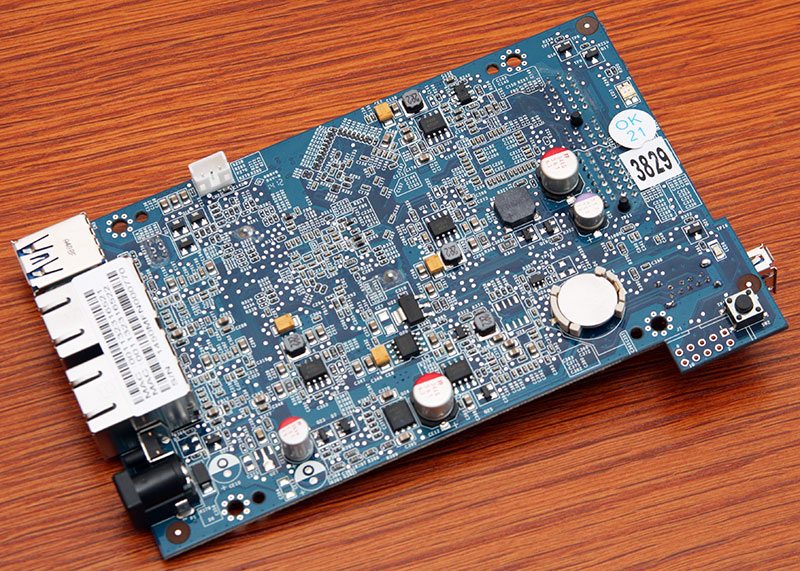
With the rear IO and power button mounted on the other side of the motherboard alongside a multitude of minor components, the inner side of the motherboard (as it would be positioned inside the chassis) is where we find everything major.
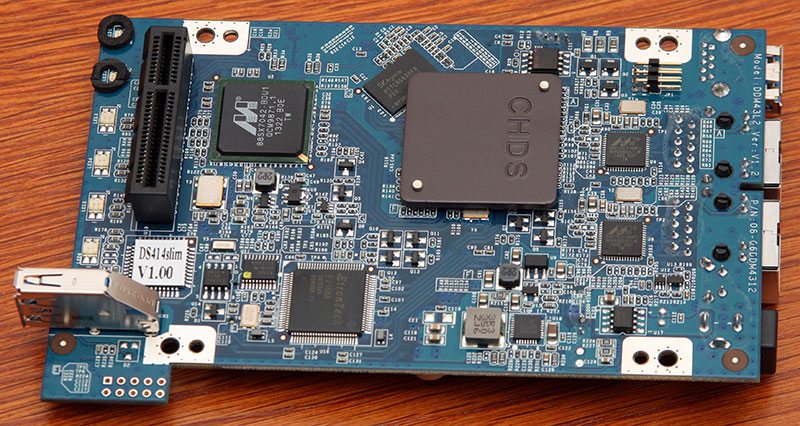
Working from the front of the system and working back, the second USB3.0 port is mounted at 90° to the board for ease of use, with the six status LEDs for the drives and NICs lined up to the left. Tucked in between the PCIe lane and USB port is the slim’s BIOS package.
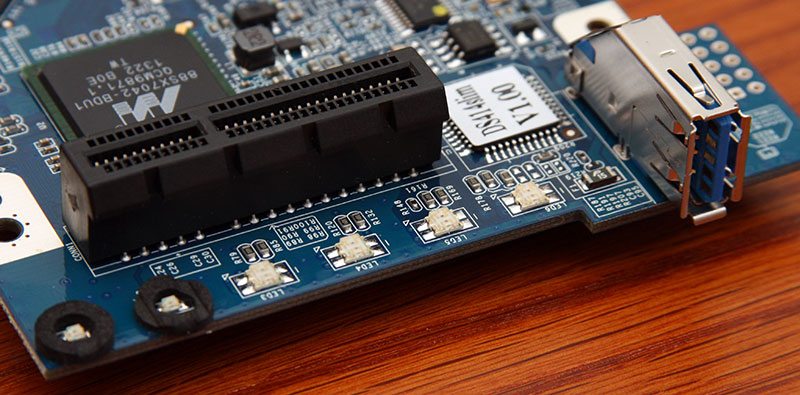
Next up we see a trusty EtronTech USB3.0 controller present with a Marvell 88SX7042-BDU1 four port SATA II controller to the right. Although SATA 6Gb/s is the current standard, 3Gb/s controllers are more than man enough of delivering the speeds that we want due to the bandwidth limitations of Gigabit Ethernet.
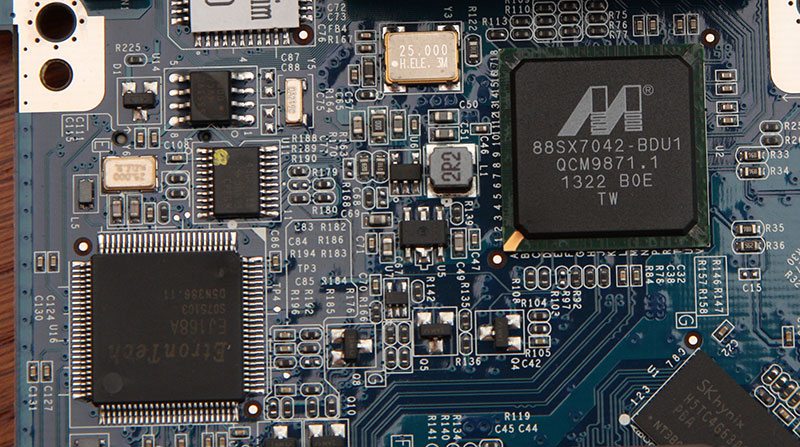
Sat below a solid CHDS marked heatsink is a Marvell ARMADA 370 SoC clocked at 1.2GHz, with a SKhynix H5TC4G63AFR 512MB DDR3 package sat beside it. As seen on a number of other systems, even though the SoC is capable of driving the two network interfaces; moving this responsibility over to another area of the system lifts some of the load off the SoC, lowering the temperatures inside the NAS.
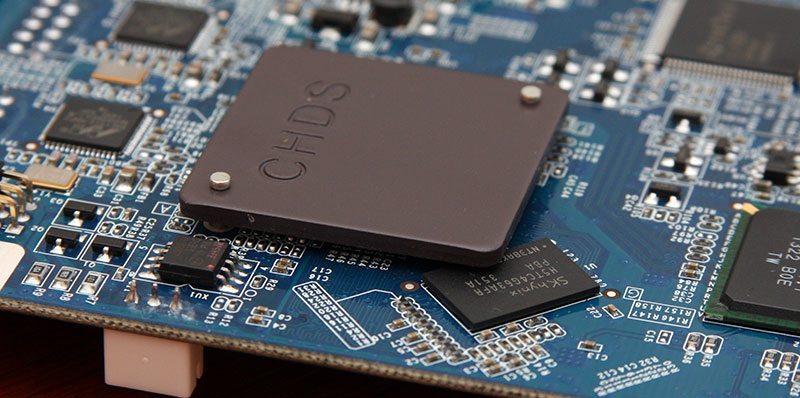
Tucked at the back of the motherboard are the aforementioned Gigabit Ethernet controllers which take some of the load off the SoC. With the two 88E1512-NNP2 GbE transceivers to hand the slim can offer up network load-balancing, fail-over and link-aggregation features which are starting to become more popular with enthusiasts – even at this level.
